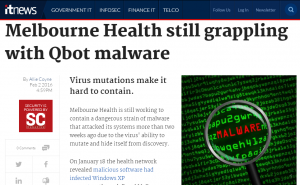In workshops, presentations and executive briefings, I continue to push one clear message. Experience is the Currency of Your Brand. This new consumerverse that we have found ourselves in goes beyond the simple notion of being “customer centric” – to the heart of what it means to be invited into the lives of our customers. For no matter whether we are engaging prospects in a buyer’s journey and nurturing their engagement through to a purchase, or we are working with a community of passionate brand advocates (and yes, they do exist), it’s important to remember that the brand – our brand – never really sits at the centre of our customer’s lives. They sit at the centre of ours.
Increasingly, the experience of engaging with a brand occurs online. When you map out a customer or buyer’s journey, it soon becomes clear that the majority of brand touchpoints are digital. It could be a banner or Facebook ad that kicks off the process for a buyer. It could be an Instagram photo or associated hashtag. It is estimated that around 60% (or more) of the purchase decision is made before customers engage a brand – so that is a significant percentage of non-owned brand experience that is taking place.
Moving your customer from unknown to known
One of the simplest ways of moving your potential customer from unknown to known, is for them to share some information with you. It could be their name, an email address or a Twitter handle. They may leave a comment via Facebook or Instagram. Or they may even call your call centre. But as soon as they do, it means you have an opportunity to engage them more directly. It’s a great opportunity for personalisation or targeted content/engagement.
BUT there are also risks.
Cyber security is about brand trust
When storing customer’s details, you have a duty to do so securely. Not just because of privacy policies or even local laws. Your duty is to protect the TRUST that has been bestowed upon you. And we will hear more about this through 2016. As I write, books are being printed on the subject of “trust” by thought leaders, analysts and marketers around the world. It’s a hot topic because it has a direct impact on our ability to deliver our brand promise. This flows on to brand reputation and even market capitalisation.
Trust is also a hot topic because we are now seeing far more sophisticated digital attacks that are difficult to detect and fix. Take, for example, the strain of malware that impacted the Melbourne Health computer networks in early January 2016. Malware is a type of malicious software that is used to gain access to computer networks to gather information, show unwanted information/advertising and to generally disrupt computer operation. In more extreme examples, we are seeing a type of malware called ransomware encrypting whole networks and hard drives and demanding a ransom to unlock the system.
As IT News reported:
The malware downed the hospital’s pathology systems and forced staff into manual workarounds.
It made its way into the health department through an unnamed zero-day exploit in Windows XP computers, past the agency’s full enterprise antivirus suite.

The Melbourne Health attack has been programmed to “self mutate” which means that it is constantly changing its own internal software structure, writing and re-writing itself as a way of escaping detection. Three weeks after the infestation, it seems that the Melbourne Health IT Team is starting to come to grips with the challenge.
But ask yourself – could your business cope with three weeks of business disruption? How would your new “autonomous vehicle” product team deal with the kind of challenge that Fiat Chrysler encountered last year? Would your new “internet of things” startup cope with a security breach due to something like the Heartbleed bug?
Perhaps the greatest lesson we can learn from the Ashley Madison hack is about the importance of trust and fidelity. To paraphrase Ashley Madison’s tag line – “Customer attention is short. Have good security”.
 Even if you are running a small business, cyber security is an issue for you and your brand. Sites that are affected by malware, for example, will find themselves blacklisted by Google. That means that every time someone searches for your business or tries to visit your webpage, Google will step in and ask you whether you want to proceed to an “insecure” website. And then, of course, there are other issues – from loss of files, customer data and more.
Even if you are running a small business, cyber security is an issue for you and your brand. Sites that are affected by malware, for example, will find themselves blacklisted by Google. That means that every time someone searches for your business or tries to visit your webpage, Google will step in and ask you whether you want to proceed to an “insecure” website. And then, of course, there are other issues – from loss of files, customer data and more.

